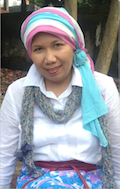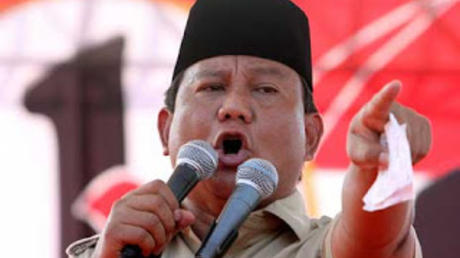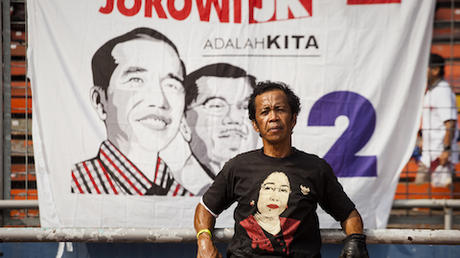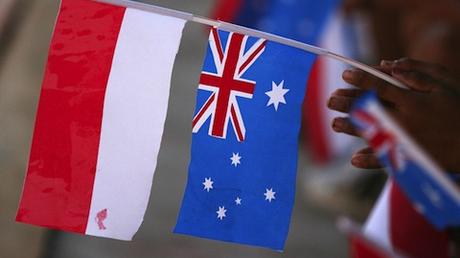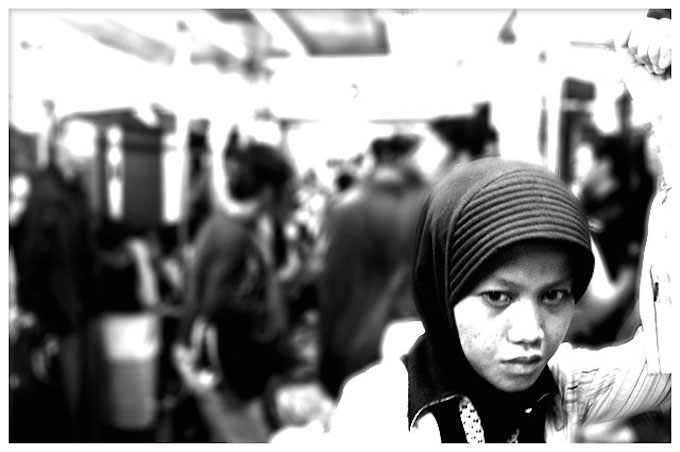In 2004 Indonesia – the world’s largest Muslim-majority nation – introduced affirmative action quotas requiring political parties to field at least 30 per cent female candidates in national and sub-national elections.
Subsequent reforms have strengthened and extended the requirements, including insisting political parties also include a minimum 30 per cent of women in their executive boards.
Female representation had been a major issue since the 1999 general elections, the first free and democratic election after the collapse of the Suharto regime. The percentage of women in the national parliament was then just 8.8 per cent (44 members) compared to 91.2 per cent of male parliamentarians (455 members).
The quota came out of concerted campaigns by women activists, at both national and regional levels. As a result the number of women in the National Parliament increased slightly to 11 per cent in 2004, the trend continuing in the 2009 poll, where the number of female parliamentarians grew to 18 per cent (103 members) compared to 82 per cent male (457 members).
In today’s election a record number of women are vying for seats – 38 per cent of 6,608 registered contenders.
But these raw figures mask a more nuanced, and still difficult, reality for aspiring women candidates, who continue to face significant hurdles. A disproportionate number of them are endorsed in the least winnable constituencies. At sub-national levels, both in provinces and districts, female numbers remain low and in several districts there are still no female representatives.
Many politicians still either don’t grasp or don’t endorse the rationale that many critical areas of policy, particularly gender-sensitive ones and those related to grassroots issues of health, equity and education, would be better informed if more female voices were being heard.
As in many other constituencies around the world, quotas are controversial, with some female and many senior male politicians complaining that affirmative action gives women candidates an unfair “helping hand” to enter politics. Women activists in Indonesia would certainly remember how the then President, Megawati Sukarnoputri, publicly stated in 2001 that she did not see affirmative action as a good strategy, arguing that a quota system would have an adverse effect on the standing of women.
In the last two elections there has been widespread public discussion about the caliber of female candidates; the level of support they were receiving from their parties; and the processes parties were using to identify and recruit female candidates. Requiring more female representation in the parliament is one thing, but finding qualified female candidates who are educated and articulate about women’s issues, and with a solid grasp of politics and process, is another.
Surveys conducted by the Jakarta-based watchdog Indonesian Society Concern for the Parliament (FORMAPPI: Forum Masyarakat Perduli Parlemen Indonesia) revealed that in the 2004 and 2009 elections, 44.9 per cent of the female candidates were businesswomen, with many joining the parties just a few months before the elections.
Among 2,467 women legislative candidates from 15 political parties vying for seats in the House of Representatives today, many of them are members of “political dynasties”: wives, daughters, mothers, mothers-in-law of already powerful political or party elites. Female TV stars, singers and actresses also make up a significant proportion of the field. Despite their lack of knowledge and experience in politics and strategic issues, the parties plainly find these cohorts have distinct advantages: businesswomen and family dynasties can fund their own campaigns; and celebrities easily garner media attention.
The parties all have in their ranks women with knowledge and experience in politics, but they make up only a minority of the endorsed candidates. In short, the parties were vying to recruit female candidates simply to meet the quota requirement, with little regard for encouraging and supporting qualified female candidates, even those in their own established ranks.
The Indonesian government, through the Ministry of Women’s Empowerment and Child Protection, has offered special training for 4,500 women candidates for the House and Regional Legislative Councils as well as the Regional Representatives Council. According to the United Nations Development Program (UNDP) Indonesia, which is helping the ministry to provide training for women candidates, 50 per cent of the candidates who attended the training still lacked the necessary knowledge to become a lawmaker.
The Ministry of Women’s Empowerment and Child Protection also launched a TV advertisement urging a vote for female candidates. The former president, B.J. Habibie will be the spokesman in the ad, saying men are not capable of solving every problem.
This 2014 legislative election will reveal whether the number of female parliamentarians will continue the trend of the last three post-Suharto elections. However, the challenges are complex and the road to achieve a gender-balanced parliament in the young democracy is still long.

